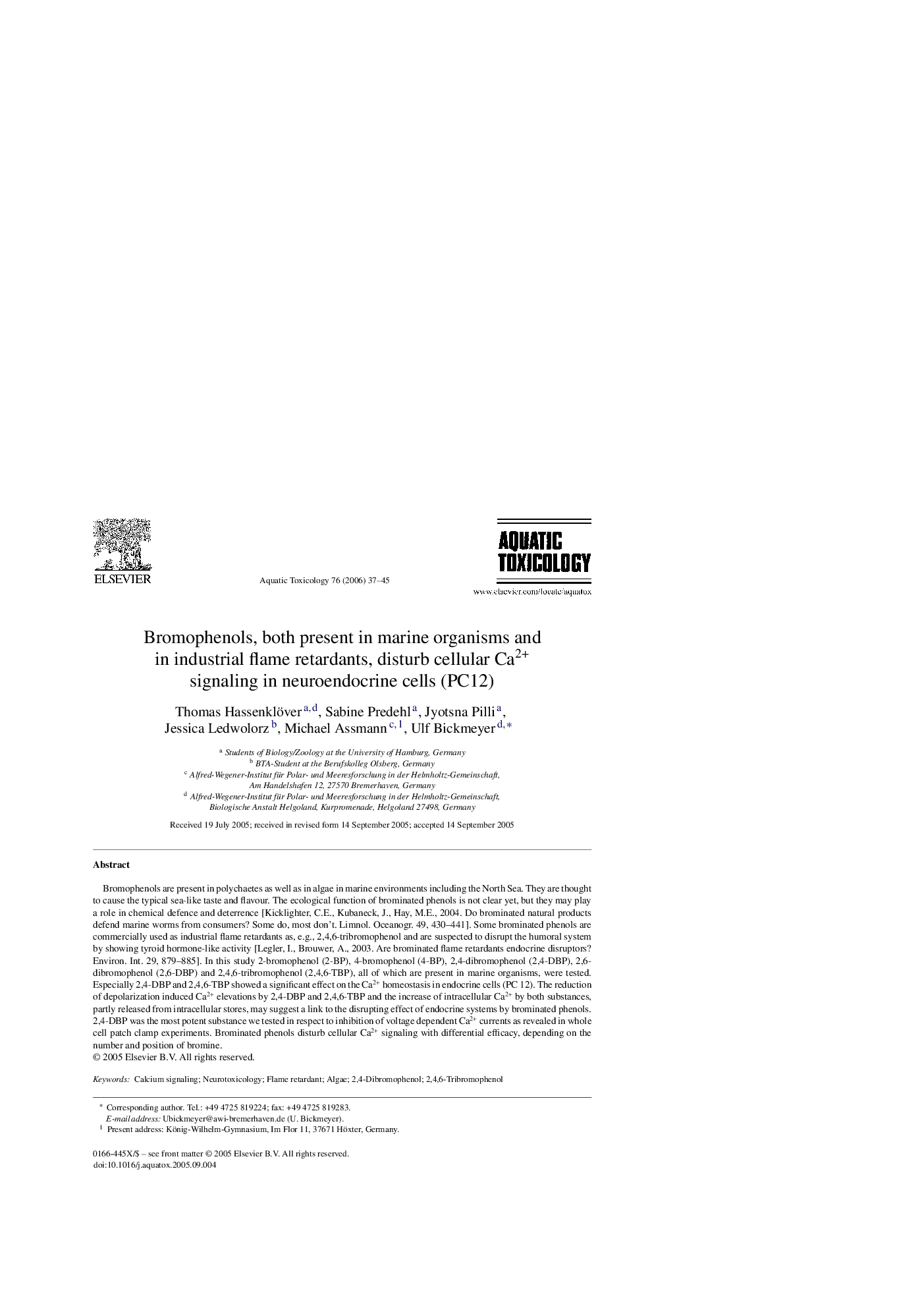| Article ID | Journal | Published Year | Pages | File Type |
|---|---|---|---|---|
| 4531463 | Aquatic Toxicology | 2006 | 9 Pages |
Bromophenols are present in polychaetes as well as in algae in marine environments including the North Sea. They are thought to cause the typical sea-like taste and flavour. The ecological function of brominated phenols is not clear yet, but they may play a role in chemical defence and deterrence [Kicklighter, C.E., Kubaneck, J., Hay, M.E., 2004. Do brominated natural products defend marine worms from consumers? Some do, most don’t. Limnol. Oceanogr. 49, 430–441]. Some brominated phenols are commercially used as industrial flame retardants as, e.g., 2,4,6-tribromophenol and are suspected to disrupt the humoral system by showing tyroid hormone-like activity [Legler, I., Brouwer, A., 2003. Are brominated flame retardants endocrine disruptors? Environ. Int. 29, 879–885]. In this study 2-bromophenol (2-BP), 4-bromophenol (4-BP), 2,4-dibromophenol (2,4-DBP), 2,6-dibromophenol (2,6-DBP) and 2,4,6-tribromophenol (2,4,6-TBP), all of which are present in marine organisms, were tested. Especially 2,4-DBP and 2,4,6-TBP showed a significant effect on the Ca2+ homeostasis in endocrine cells (PC 12). The reduction of depolarization induced Ca2+ elevations by 2,4-DBP and 2,4,6-TBP and the increase of intracellular Ca2+ by both substances, partly released from intracellular stores, may suggest a link to the disrupting effect of endocrine systems by brominated phenols. 2,4-DBP was the most potent substance we tested in respect to inhibition of voltage dependent Ca2+ currents as revealed in whole cell patch clamp experiments. Brominated phenols disturb cellular Ca2+ signaling with differential efficacy, depending on the number and position of bromine.
